Diseases and pests of lilies
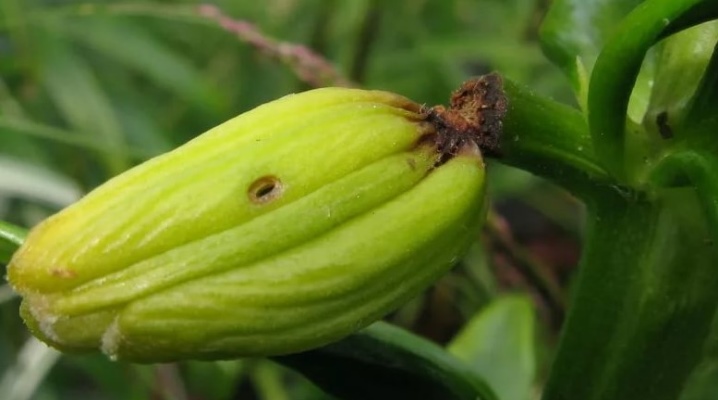
Lilies are frequent guests of suburban household plots and adjoining territories within the city. They are famous not only for their exceptional beauty and decorativeness, but also for their unusual aroma. However, only a healthy plant can please the eye, which means that you need to learn to recognize the slightest signs of ailments and fight them. Today you will learn what diseases the lily is most susceptible to, what pests like to feast on its herbs, flowers and bulbs, as well as what are the folk and traditional methods of treatment.

Reasons for the appearance
To select an adequate method for curing a plant, it is important to know the causes of a particular visual sign of ill health. Let's list them.
- Lily is a culture that is demanding on the composition of the soil in which it grows. Therefore, before planting it on your personal plot, make sure that your land is suitable for planting this plant.
- In healthy lilies, the foliage has a rich green color. Its change to yellow can signal an excess or, conversely, a lack of moisture.
- A yellowed leaf with green veins is a sign of chlorosis. This is the plant's response to poor, low-mineralized soil.
- If the shade of the leaves turns brownish, the soil may be oversaturated with nitrogen. A frail plant with yellow leaves, on the other hand, signals a lack of it.
- Buds and flowers fall, leaves curl and become stained, lily grows poorly, withers - all this can be a sign of any disease, damage by viruses or pests. Read more about this below.
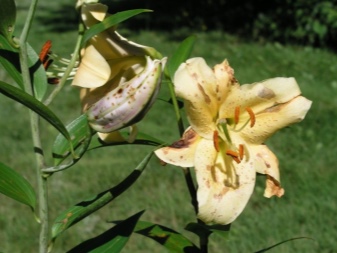
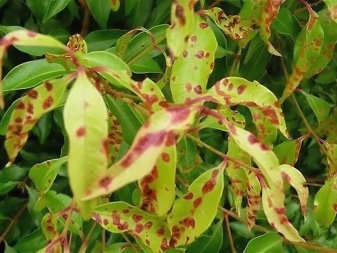
Description of diseases
Let's now find out what ailments the lily is subject to, and by what signs you can recognize this or that problem.
- Botrytis (gray rot). The causative agent of the disease is the fungus Botrytis cinerea, which lives in the ground on the remains of plants. It is activated when the temperature drops and the humidity rises. At first, everything does not seem serious: the leaves located below begin to wither and fall off. But then gray rot affects the lily almost instantly: the stem turns brown, the plant sheds its leaves, the buds and flowers darken and fall off.
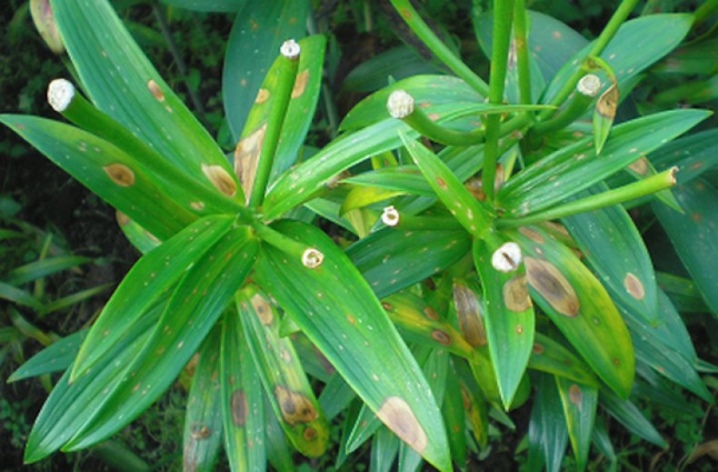
What is noteworthy: the plant does not die immediately, since Botrytis does not affect its bulb - it only stops growing and can sprout again the next year.
but if the lily is not treated, after 3 years it will die. Sometimes gray rot affects young growth, and then the plant begins to wither from above. The buds darken, curl, rot and fall off without blooming. When the infection reaches the point of growth, the lily stops developing and dies.
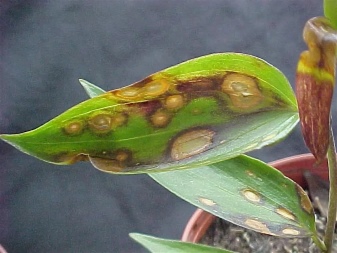

- Fusarium. Another fungal disease. Signs: the appearance of oblong specks of orange or brownish tint on the part of the stem that is located underground. As the fungus spreads further, the stem begins to rot, the foliage takes on an unhealthy yellow or purple color, and the lily dies. With a bulbous defeat by Fusarium, decay begins from the roots - they become brown-red, the scales rot at the base. If the disease is accompanied by high air humidity, the infected plant tissues are "covered" with a pink-white bloom - fungal spores.
Fusarium is especially dangerous in a closed greenhouse space, where it is usually warm and humid.You can lose all the plants that are there, plus get infected soil, where nothing can be planted without fear of infecting the plantings with this ailment again.
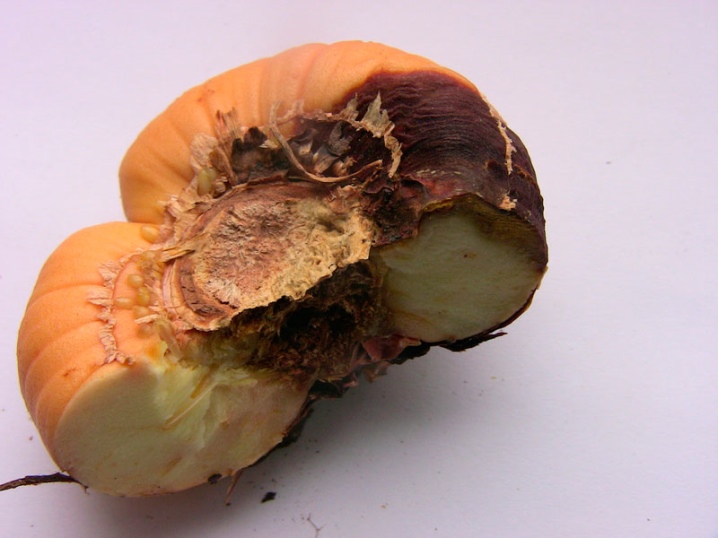
- Cercosporosis. Signs: Small yellow-brown markings with a dark border appear on the tips of the leaves, gradually increasing in size and completely covering the entire plant. This disease is not typical for daylilies, however, the plant can "pick up" it from the vine, beet, watermelon. Cercosporosis is not fatal for a lily, but it loses its decorative appearance.
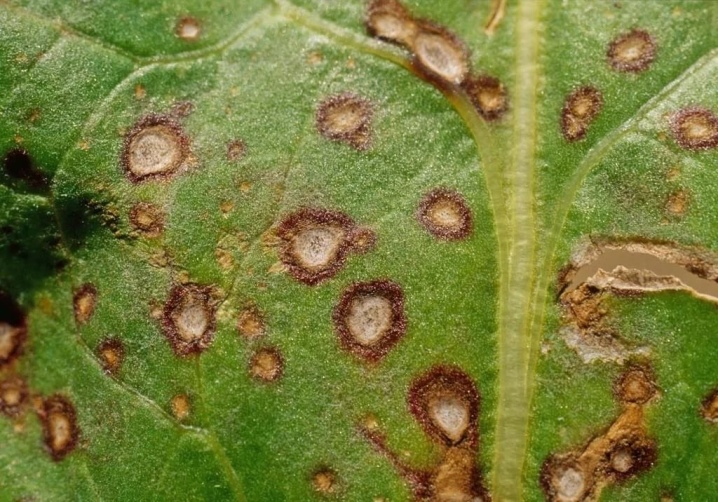
- Anthracnose the plant will not kill either, but it will definitely make it ugly: all the foliage will be covered with brown spots, after which it will shrink and dry out.
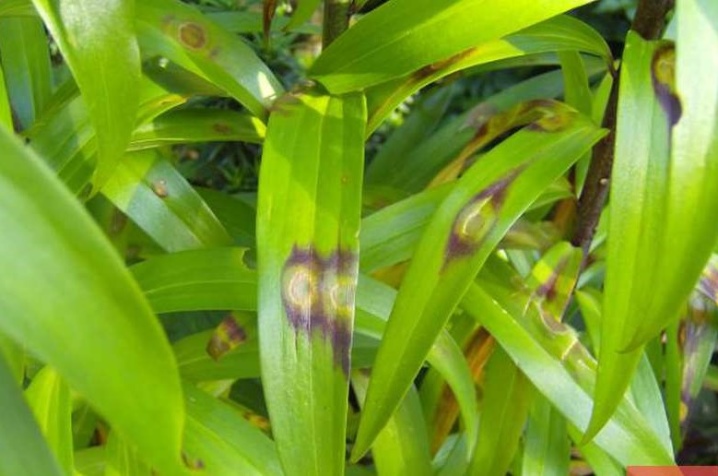
- Rhizoctonia (sclerocial rot). Affects the lily bulb. Between its scales, the development and reproduction of a fungus occurs, which visually looks like a slimy gray-brown plaque. The bulbs are deformed, and the young grows out of them either stunted and twisted, or do not appear at all. Bad news: the causative agent of the disease can live and thrive in the soil for 10 years or more, even if the temperature drops.

- Fitium. It also attacks the root system, causing it to rot. Lily ceases to receive food and moisture from the soil, becomes lethargic, and stops blooming. External signs of phytium: the tips of the leaves turn yellow, dry, brown spots appear on the bulbs. The plant dries up and loses its decorative properties.
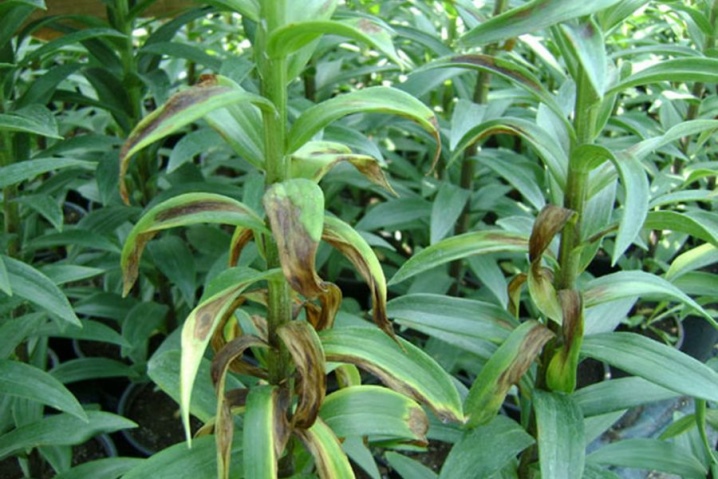
- Blue mold. A disease that the lily can pick up during storage. The bulbs are covered with white spots with a green bloom - the spores of the parasitic fungus.

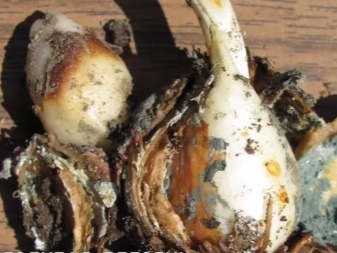
- Penicillosis. It affects the whole plant, causing it to rot. The lily is covered with green mold, stops growing and blooms poorly.
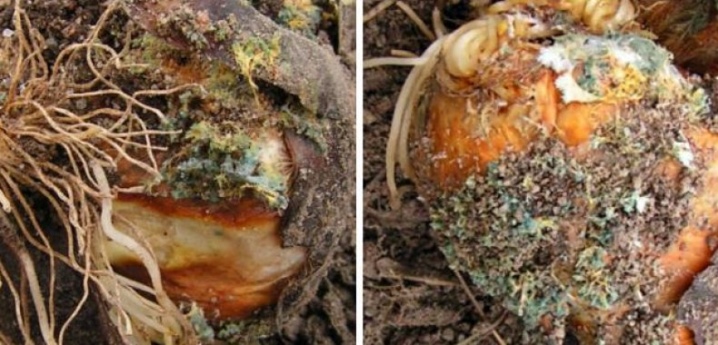
- Rust. The carriers of this disease are the onions of diseased lilies and parts of other plants on which the spores of the fungus remain. Signs of rust damage: the appearance of small specks on the foliage, which do not have color, but gradually turn yellow. On their surface there are voluminous orange "pads" - mushroom spores. After that, the leaves and stems of the plant dry up.
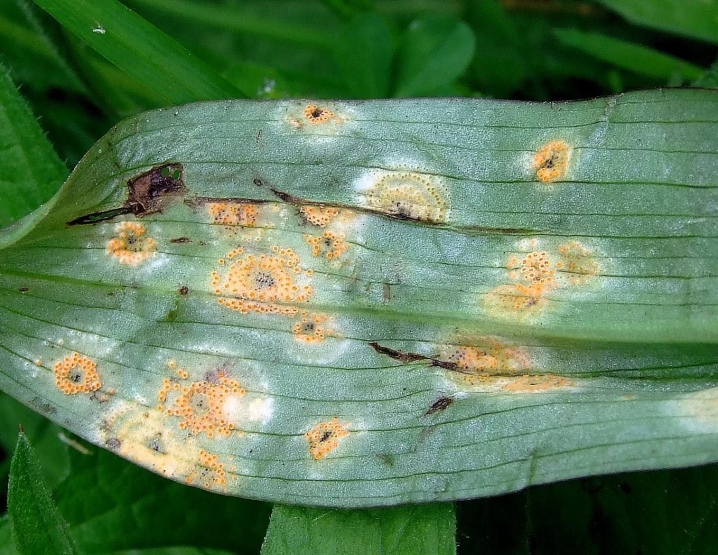
- Cucumber and tobacco mosaic viruses. The disease is carried by aphids. At first, the petals and leaves of the lily are covered with specks and strokes, then they are deformed, like the stem, and the flower stops growing.
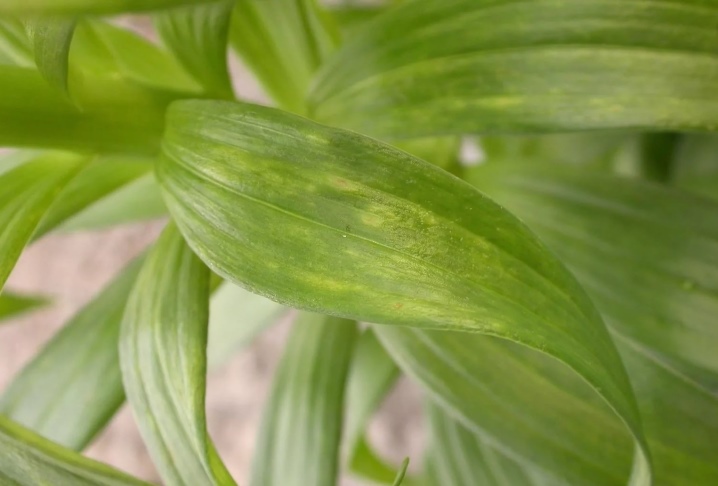
- Tulip variegation virus. A disease due to which the lily completely loses its decorative effect. It begins like this: due to a violation of pigmentation, the petals are covered with chaotically scattered spots and stripes - dark and light. Then the disease spreads to the leaves, "decorating" them with a mosaic of stripes, strokes and spots. The plant looks "faded".
Sick onions of the next generation become smaller, the young grow frail, all this leads to the degeneration of the variety.
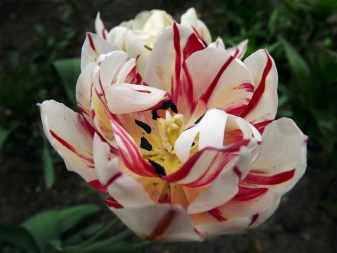

- Rosette disease. Signs: stunting of peduncle growth, thickening and deformation of the stem, complete absence of flowers. Lily grows weak, grows poorly in height. The disease is carried by aphids.
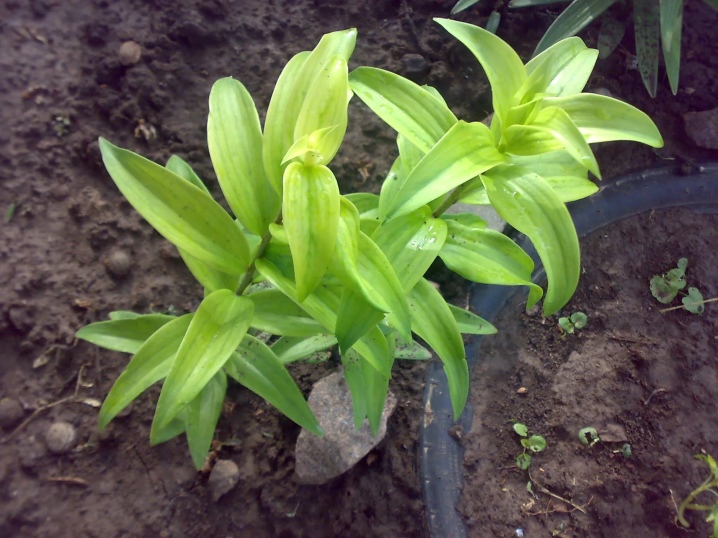
Pest overview
Not only fungi, viruses and bacteria can harm your blooming beauties - larger enemies lurk in the garden. Let's consider them.
- Spider mite. If you notice that the lily leaves are curling, white bloom and cobwebs have appeared on them, as well as small red dots, you can be sure that your plant is attacked by a spider mite. Its main danger lies in the formation of large colonies that suck the juices from the young, which often ends in the death of plants.

- Squeak beetle. If black slimy lumps appeared on the lily, most likely it was honored by a squeak beetle or a crackling beetle. Under these lumps, its red larvae are hidden, eating foliage. They need mucus to scare away enemies. And these worms themselves are capable of destroying the leaves.
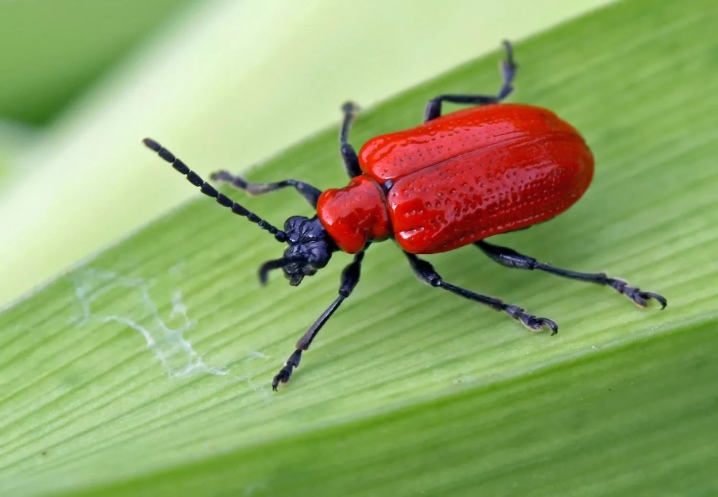
- Lily fly. Starts on young, still colorless lily buds. It completely eats them out from the inside, and then leaves the affected plant and "goes" underground to pupate.
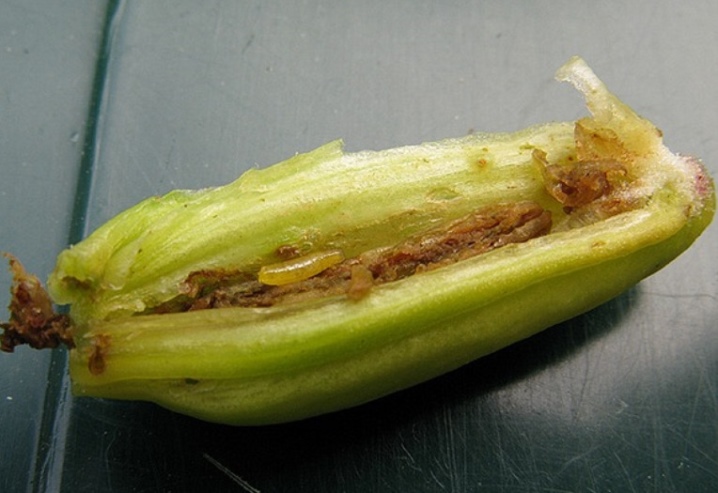
- Medvedka. A rather creepy looking insect that looks like a mole and an excavator at the same time. It lives underground, where it digs tunnels for movement, however, it can fly from place to place through the air - yes, this "monster" also has wings. In a lily, the bear eats onions, roots, stems, sometimes turning to leaves and even flowers.
The death of the plant is inevitable if the insect gnaws at its stem or destroys the bulb.

- Beetle larva. If, while digging up the soil in your garden, you suddenly stumbled upon large thick white worms with orange-red heads and paws, you should know that these are May beetle larvae (beetle), and they are terribly harmful to lilies. Like the previous pest, this one is able to gnaw the entire root system of the plant, as a result of which it will die.

- Onion hover. A small black front sight with a greenish tint of the body, the wings are folded on the back. You can easily distinguish a hoverfly from other flies - it seems to "hang" in the air, making a characteristic sound similar to a murmur. This seemingly harmless insect lays eggs in the soil, from which caterpillars of a dirty yellowish hue appear, reaching a length of about 1 cm.
They attack the lily bulb, eating it from the inside, the plant stops growing and may die.
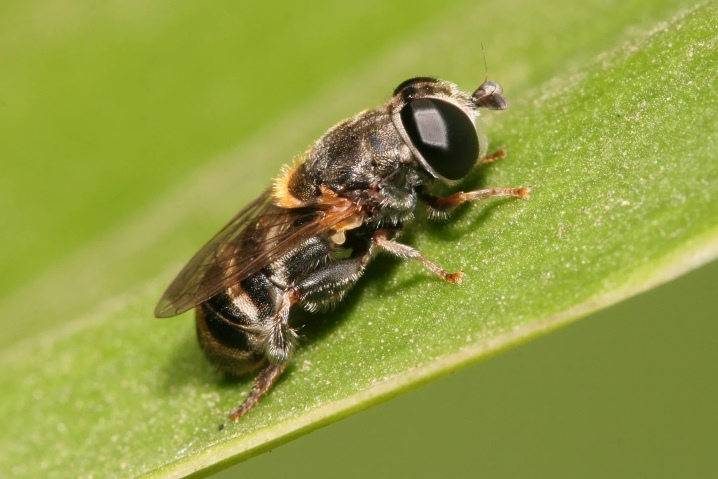
- Wireworm (nutcracker beetle larva). Perhaps as a child, you caught these glossy brownish-black bugs, emitting characteristic clicks when bending your head? They seemed so harmless, because they didn't even bite. However, their larvae cannot be called harmless - their favorite delicacy is lily bulbs, which they are able to destroy completely. Naturally, the plant dies from this.
Visually, the damage by the nutcracker beetle larvae looks like this: twisted leaves, wilted stem; gnawed "tunnels" can be seen on the bulbs.
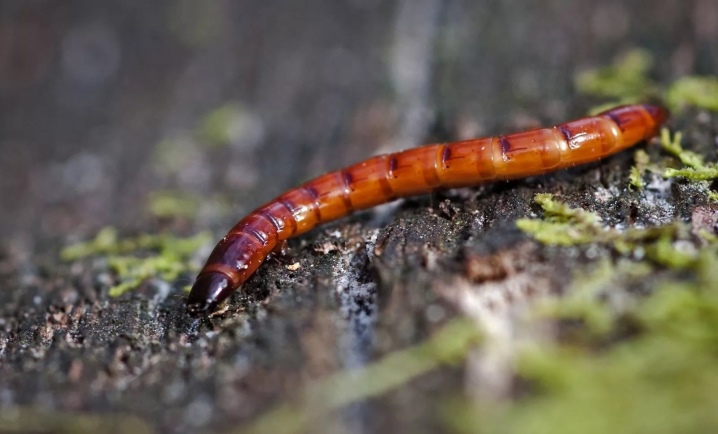
- Garden snails, slugs. Pests that eat up the foliage of lilies. It is not so easy to deal with them: in the daytime they hide under stones, clods of earth, leaves. You can collect them by hand, after spreading wet rags, boards and large leaves on the surface of the soil - slugs will hide in these shelters, and you can find them.

Treatment methods
Gardeners who are adept at growing lilies are advised to start treating plants at the first signs of an illness - just in time, the help provided can save your green “pets” and prolong their life. Consider the popular methods of treatment with special and folk remedies.

Special means
All drugs that will be mentioned below you can find in flower shops.
- "HOM", "Oxyhom", Bordeaux liquid help well against botrytis. Spraying with these solutions is carried out at the first signs of the disease.
- In order to protect lilies from fusarium, disinfect the soil with copper sulfate and formalin about a couple of weeks before the onion planting procedure. The bulbs themselves will be nice to hold in the Fundazole solution (0.2%) for at least 30 minutes. Spray the planted young growth with Bavistin once a week and a half; you can also use Topsin-M (0.2%) or Euparen.
- If you notice signs of cercosporosis, irrigate your lily plants with Bordeaux liquid (1%) or Topaz, HOM, Abiga-Peak preparations. Once every 3 weeks, spray with a solution of "Alirin" and "Gamair" (take 2 tablets of both, dilute in 10 liters of water).
- To combat anthracnose, you first have to get rid of the affected foliage in order to prevent the spread of infection, and then spray the lily with fungicidal agents: Fundazol (15 g per 10 l of water), Rovral (1 g per 1 l of liquid).
- Rhizoctoniasis can be dealt with by Abiga-Peak (50 g per 10 l), HOM (40 g per 10 l), and Fundazol (20 g per 10 l).
- Removal of all infected areas of the lily and preliminary treatment of the soil with a solution of cumulus (0.4%) will help get rid of phytium.
- As we remember, the plant can become infected with blue mold during the storage period of the planting material. This means that we examine and discard diseased onions, follow all recommendations for their storage, ventilate and disinfect the room.
- If you notice signs of penicillosis, soak the planting material in a solution of potassium permanganate (0.2%).
- Removing infected foliage with its subsequent burning, spraying the plant with a solution of "Tsineba" (0.2%) and regular fertilizing with fertilizers containing potassium and phosphorus helps to remove rust.
- From viruses of cucumber and tobacco mosaic, as well as variegation of tulips and rosettes, first of all, the fight against the causative agent of diseases - aphids will help to get rid of. For this, it is recommended to irrigate lilies with a solution of "Karbofos" (0.3%). If mosaic "patterns" have already appeared on the flowers, you should remove the affected parts or even completely destroy the plant.
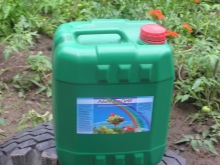

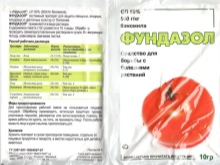
And now we will tell you about what products will help in the fight against pests.
- The spider mite will be destroyed if you spray the lilies with soapy water or Karbofos (0.2%). Treatment should include irrigation of the trunk circle, as well as the entire plant as a whole.
- The squeaky beetle is afraid of insecticides ("Decis", "Intra-Vir"), as well as the aforementioned "Karbofos" (0.2%). The same goes for the lily fly.
- If a bear was seen on the site, plant tagetes next to the lilies - its aroma will scare away these harmful insects.
- Any caterpillars will be defeated by carefully weeding the lily bed and deep digging of the soil every fall. It is also recommended to treat the plants and land around with insecticides.
- Slugs are afraid of "Metaldehyde". The preparation granules are laid out under the bushes in 3-4 pieces.
- You can fight aphids by spraying lilies with insecticidal preparations.
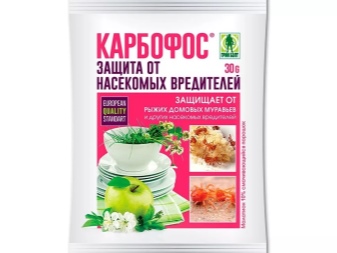

Traditional methods
Nobody argues that special preparations artificially synthesized in laboratories help out gardeners. However, not everyone likes to process plants with chemicals, and then time-tested folk remedies come to the rescue.
- Before planting, it is recommended to soak the lily bulbs in a weak solution of potassium permanganate for half an hour. This helps protect plants from many diseases and pests.
- For the bear, flower growers offer the following remedy: take a couple of liters of soapy water, pour it into the place where the bear is located and wait a little. The insect should soon appear on the surface, then it can be caught and destroyed.
- We destroy aphids: take garlic (3 or 4 heads), chop it, pour 1 liter of water and leave for 3-4 days in a container with a nylon lid. Next, dilute 25 ml of the tincture in a 10-liter bucket of water and spray the lily plantings.

Preventive measures
Any disease is easier to prevent than to cure, therefore we invite you to familiarize yourself with the care procedures that will keep the lilies intact.
- Always pre-process the planting material. Preparations-disinfectants "Maxim", "Prestige" are well suited.
- Examine the bulbs: they should be dense, elastic, with no signs of decay or damage.
- Plant lilies in well-lit areas as they love sun exposure. If the beds are shaded, it will attract pests, many of which are afraid of direct sunlight, and flowering will slow down a little.
- When planting lilies, keep a sufficient spacing between them (about 25 cm), as they do not like thickening. Otherwise, if one plant is affected by a fungus, virus or parasite, the entire colony will inevitably fall ill.
- When digging the onions in the fall, do it carefully so as not to damage them.
- Watering lilies should be frequent and abundant. The optimal hours for this are early in the morning and late in the evening.Watering should be closer to the roots, use only warm, settled water.
- In the spring, when the first leaves are blooming, you need to spray the bushes with copper oxychloride.
- Provide adequate ventilation in the room where you are storing the planting material.
- Most harmful insects will refuse to attack your lilies if they are fed with fertilizers containing potassium and phosphorus.
- The smell of dill, garlic, marigolds repels rodents and many other pests. Plant them between the lily beds.
- Treat the soil with formalin regularly.
- In the autumn, after digging the bulbs, it is necessary to dig up the ground well. It is recommended to burn the remains of plants.
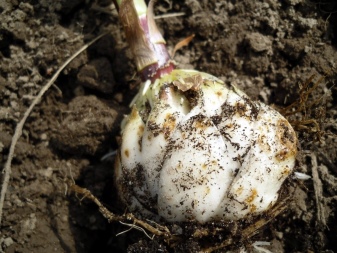
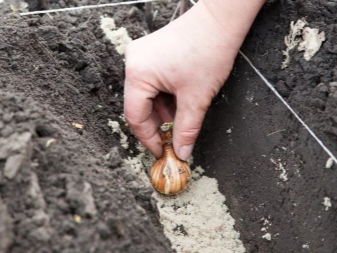


See below for more details.







































































































The comment was sent successfully.